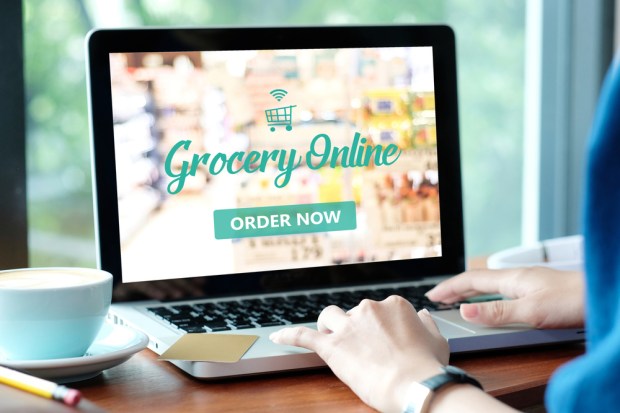Why Grocers Are Providing Fresh Options For Digital Omnicommerce Shopping

Grocers are stepping up their cross-channel digital efforts by rolling out new ways for consumers to order their groceries and have them delivered. Amazon has taken this approach with Whole Foods and Prime Now, and Kroger has recently rolled out a new delivery service dubbed Kroger Ship.
Kroger and Amazon are hardly alone in their efforts to introduce more ways for consumers to shop for groceries. Omnichannel features are becoming more crucial as tech-savvy millennials gain more spending power and influence, according to the PYMNTS Enterprise Retail Grocery Report. Find out how grocers are tackling omnichannel options in the digital age with the following roundup:
Ninety percent of customers shop and purchase groceries in a physical store: Online sales may be skyrocketing, but eCommerce is still just scratching the surface when it comes to groceries. According to Gallup’s “Consumption Habits” survey last year, only 9 percent of adults in the U.S. purchased groceries online at least once a month. That percentage dropped to 4 percent when respondents were asked if they shopped for groceries online weekly. On the flip side, 83 percent of respondents said someone in their households shops in-person at a supermarket for groceries at least once a week. Since the lion’s share of U.S. consumers still shop for food in brick-and-mortar grocery stores, there is an opportunity for huge growth in the online grocery shopping sector.
Nearly 17 percent of consumers say having the ability to scan and pay with a mobile phone is the most important factor when choosing a grocery retailer. Tesco, in particular, is testing a checkout-free payment method in the U.K. called Scan Pay Go at a Tesco Express C-store on its corporate campus. To use the service, consumers scan their groceries on a mobile phone and then simply leave the store with their selections when they are finished shopping. Convenience Transformation Director Steven Blair said, “The feedback is very good on it but it’s super early.” While certain staff can use the service, the experiment might be conducted more widely if it proves to be successful. The news came a few months after Amazon opened a cashierless C-store in Seattle.
Twenty-four percent of consumers who shop online prefer to have their orders shipped to them instead of picking them in-store. In a continued expansion of its Prime Now delivery offering, for instance, Amazon and Whole Foods Market brought the service to several new cities such as Tampa and Milwaukee in September, as well as new areas of Seattle and New York. In an announcement, Whole Foods Market’s executive vice president of operations, Christina Minardi, said, “Prime Now delivery continues to be a hit with our customers and we’re excited to introduce the service in ten new cities plus more neighborhoods in New York and Seattle.” In July, Amazon expanded its Prime Now grocery delivery service by adding more areas of New York City along with three cities in Florida to the platform.
Bridge Millennials — those who are 30 to 40 years of age — are most likely to use an online device or voice assistant during their grocery visits, with 8 percent of this generation shopping via a computer.
Based on the results of conversations with 5,000 consumers in the U.S., France and Germany, a survey from the Capgemini Consulting Digital Transformation Institute found in its Conversational Commerce Survey that 40 percent of consumers plan to use voice assistants as a substitute for apps or mobile sites within the next three years. Furthermore, Capgemini found that 81 percent of users have already tried voice assistants via their smartphones, and approximately 32 percent of users have tried them with a smart speaker. In addition, nearly 21 percent of respondents have used voice on a screened device like an Amazon Fire TV or Echo Show. And, according to the survey’s breakdown, 35 percent of polled users have ordered clothes via voice and 31 percent predict they will use a voice assistant in place of going to a physical shop within the next three years.
Only 5 percent of consumers shop and purchase groceries online, but 27 percent want a well-coordinated online and in-store shopping experience. A Food Marketing Institute and Nielsen report noted that the majority of U.S. grocery shoppers may purchase at least some of their groceries online within five to seven years. According to researchers’ estimates, 70 percent of shoppers will purchase some portion of their groceries online within five to seven years. Previously, both organizations believed it would take up to a decade for consumers to become interested in buying their groceries online. Their spending could reach $100 billion, greatly impacting grocery shopping in brick-and-mortar stores. Still, consumers are expected to make 80 percent of their grocery spending offline.
How is Kroger looking to the future with digital options? The grocer announced in June that it was partnering with tech company Nuro for the pilot of an on-road, fully autonomous delivery service for customers, showing that grocers continue to innovate in bringing digital options to consumers.
